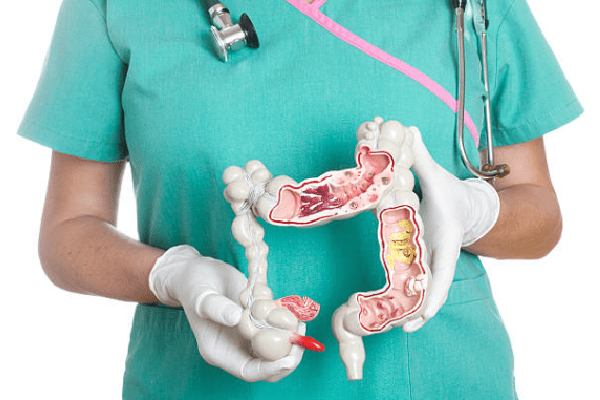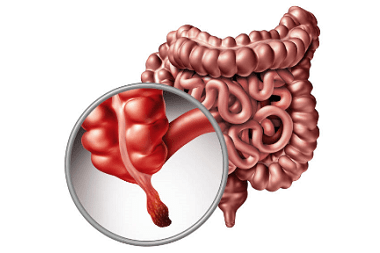Emergencies >>>> How to recognize appendicitis
How to recognize appendicitis.

Appendicitis is one of the most common diseases characterized by suddenness of development. Today you are completely healthy, and tomorrow you are already on the surgical table. As soon as a person begins to experience unpleasant sensations in the right side, the first thing that comes to his mind is the fear: "Isn't it appendicitis?" In order not to get lost every time in guessing what hurts in the stomach on the right , we will deal with the characteristic signs of appendicitis.
Where exactly is the appendix located? The appendix (a small process of the cecum about 8-9 cm long) is located on the right side of the ileum - this is the lower part of the right half of the abdomen. In people with a heart on the right, the appendix is located on the left side of the iliac region.

When the appendix is inflamed, it can change in size (it can stretch in width and length).
There are as many reasons for appendicitis as there are theories regarding inflammation in the appendix. It is almost impossible to track what caused the inflammation of the appendix in each specific case, but the statistics collected over many years of acquaintance with the disease of appendicitis suggest that the causes of the onset of inflammatory processes in the appendix could be:
- its anatomical features (many bends that contribute to the retention of digestion residues) and location features (the end of the cecum - where the digestive components are unable to move further or be washed out);
- infection of the appendix with pathogenic microorganisms that have entered the bloodstream from other organs (for example, from nearby uterine appendages in women, or even from inflamed tonsils), or from the intestines;
- violation of the evacuation functions of the intestine as a result of blockage of the appendix mouth with dense fecal calculus;
- blockage of blood vessels supplying the appendix as a result of thrombosis or atherosclerosis ;
- improperly organized diets with a lot of meat, but a small amount of fiber, which contributes to the active removal of digestive waste from the body;
- hereditary predisposition to inflammation in the appendix associated with the presence of certain antigens
- and many more poorly understood reasons.
Symptoms of appendicitis are difficult to diagnose, since they are similar to many painful conditions: enterocolitis, rupture of the ovary, renal colic, perforation of the duodenal or stomach ulcer, an attack of acute cholecystitis, right-sided adnexitis , adhesive disease, gastroenteritis , strangulated umbilical or inguinal hernia, ectopic pregnancy and others.
Signs of appendicitis:
- An attack of appendicitis can occur when walking fast, running, but most often occurs at rest (at night or early in the morning) and the first characteristic symptom will be pain: pulling, bursting, has blurred boundaries of localization throughout the abdomen or only around the navel, or "under the spoon" ... Pain within 3-4 hours is shifted to the right side of the iliac region.
- In the supine position on the left side, the pain on the right increases.
- The pain can last for hours, but if it is noticed that it does not go away within six hours, then this fact already speaks of a disease that may require surgical intervention. But wait six hours to make sure that it is appendicitis is not worth it, since a prolonged non-visit to the doctor can result in complicated appendicitis (rupture of the appendix, peritonitis, death).
- Along with the pain syndrome, after a while (for example, within 2-4 hours from the onset of pain) the temperature rises, and the higher it rises, the more intense the inflammation processes. But there are cases of appendicitis that occur without fever (when the immune system is weakened or its reaction to infection is delayed).
- An attack of appendicitis is also characterized by the urge to vomit and nausea, diarrhea or constipation.
All these symptoms should suggest that you need to either go to an appointment with a surgeon, or call an ambulance at home.
In a medical institution, the surgeon is engaged in the diagnosis of appendicitis, and it is he who will prescribe the tests, if in doubt, he will ask other specialists (gynecologist, gastroenterologist, urologist) to pass in order to exclude some diseases similar in symptoms. It should be noted that correctly diagnosing appendicitis is not an easy task even for a specialist, therefore, at the slightest suspicion of appendicitis, it is necessary not to seek confirmation of the diagnosis yourself, but to use the services of professionals. Even if the diagnosis of appendicitis is not confirmed, the doctor will identify the disease, the symptoms of which bother you, and will prescribe treatment.
What absolutely can not be done when the above symptoms appear:
Do not take analgesics - they will distort the picture of the course of the disease and lead to an incorrect diagnosis;
Do not use warming procedures (baths, heating pad, warm compresses) - inflammatory or purulent processes will become more widespread;
You cannot eat tightly before a doctor's examination - when palpating, a full stomach or intestines can be torn.
With unbearable pain, you can take an antispasmodic once, but it can also smear the picture of pain that the surgeon focuses on when probing the abdominal region.

Read

Read



























